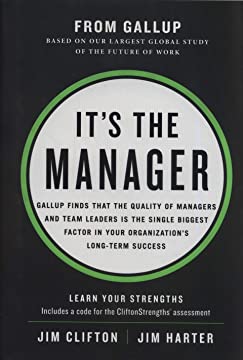Who's Responsible for Employee Success?
Cathie Leimbach • July 15, 2020
This is a subtitle for your new post

When I facilitate client meetings, every person in the room shares their perspective on the matter at hand and contributes ideas of how to move forward. Managers are often shocked at the positive energy and quality of input from their staff. Why are so many leaders, managers, and supervisors unaware of their staff’s potential and their value to the organization?
One reason is that few managers ask questions. There is a tendency for supervisors to give their staff day-by-day, or even hour-by-hour, specific instructions on what to do next, or they leave their staff alone to figure everything out by themselves. Few managers invest a lot of time using an intermediate approach. Daily or weekly two-way conversations between staff members and supervisors are relatively uncommon. Without such discussions, supervisors are unaware of their staff’s strengths and interests so can’t leverage their potential.
And, when staff don’t interact with others at work, they don’t feel valued. Their enthusiasm and productivity drop. Then, managers get frustrated with employee apathy and mediocre productivity.
Leaders push staff to work harder. Staff complain that managers aren't helpful or expectations aren't clear. Decades of Gallup research has revealed that the staff's assessment of the problem is pretty accurate. 70% of the factors that contribute to disappointing morale, engagement, productivity, and profit are the responsibility of managers.
So, what is the root cause of mediocre organizational outcomes? IT’S THE MANAGER!
Effective managers have servant hearts. They develop the skills needed to help their staff be the best they can be. They manage by asking questions that inspire great conversations and by becoming competent in the fifteen core skills of effective management. Unfortunately, this description of an effective manager does not describe the majority of managers.
What will you do this week to move beyond average? What is your next step to becoming a manager who leads with excellence and develops a healthy, high performance workplace team?
In most organizations, the instinct is to add —more goals, more projects, more meetings. But as Juliet Funt, founder of the Juliet Funt Group, teaches in her Strategic Choice process, real leadership strength lies in deciding what to stop doing . Strategic Choice is the intentional narrowing of priorities—cutting away the clutter so teams can focus on what truly drives results. It’s a disciplined act of letting go: saying no to good ideas so there’s room for the great ones. Funt’s approach challenges leaders to pause, think, and create the mental and operational space their people need to perform at their best. By removing unnecessary tasks and misplaced effort, leaders make room for precision, innovation, and real thinking time. This isn’t about doing less—it’s about doing what matters most. When businesses adopt this mindset, they replace overwhelm with clarity and regain control of their time, energy, and outcomes. For small to mid-sized companies, embracing Strategic Choice can transform busyness into focus—and that focus is where sustainable growth begins. Want a quick visual overview? View Strategic Choice: Making Room for What Matters to see how this process helps leaders focus on what truly drives results.

Hey team leaders! Ever wonder why some companies soar while others stumble? Patrick Lencioni's bestseller, The Five Dysfunctions of a Team , nails it: workplace dysfunctions such as no trust, fear of conflict, lack of commitment, avoiding accountability, and ignoring results lead to mediocre performance at best. But here's the good news—smart leadership development changes the game! Start with building trust . Train leaders to open up and be vulnerable. Teams bond, ideas flow, and costly mistakes drop. Next, embrace healthy conflict . Teach team leaders to make it safe for team members to share the pros and cons of current or new ways of doing things. This helps everyone understand different perspectives. Then, drive commitment . Leaders who clarify goals, ask everyone to share their level of buy-in, and address their concerns get everyone bought in. People focus on high value work and get more done. . Hold folks accountable through coaching. Leaders learn to give kind, direct feedback by praising good work and calmly providing more training as needed. Turnover plummets and the quality and quantity of work improves. Finally, focus on results . Be clear on expectations. Keep score by monitoring progress weekly or daily. Acknowledge team wins when the goals are met. Winning sports teams pay attention to these Five Behaviors of a Team. How would a World Series winner have been determined this week without trust among the players and coaches, openness to tough coaching, the whole team working together, players focusing on their specific positions, and getting players around the bases to get the top score? Every workplace can benefit from these team behaviors as well. Lencioni's research proves it: Companies who prepare their leaders to overcome these 5 common workplace dysfunctions, improve the culture and see huge financial gains. Invest in your leaders today. Your bottom line will thank you! Click here to learn more about the painful cost of team dysfunction.
